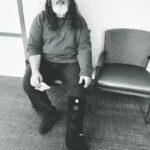Insights into osteoporosis treatments as societies around the world age.


Insights into osteoporosis treatments as societies around the world age.
The accepted wisdom is that the negative effects of glucocorticoids on bone depend on the dose and treatment duration. Adami et al. conducted this study to determine, in a real-life setting, the risk of fragility fracture associated with the dose of glucocorticoids in patients with inflammatory rheumatic musculoskeletal diseases.

Fractures in Patients with SSc By Zsuzsanna McMahan, MD, MHS Why was this study done? To minimize disability due to systemic sclerosis (SSc), it’s important to prevent and manage complications. Many SSc complications and related medications may increase the risk for osteoporosis and fracture. We sought to identify modifiable risk factors for fracture in patients…

Using data from the U.K.’s Health Improvement Network, a primary care database, Wei et al. examined whether urate-lowering therapy (ULT) in a treat-to-target approach for patients with gout reduces the risk of fracture.

Supplemental vitamin D may not significantly lower the risk of fractures in generally healthy adults compared with placebo, according to a large study by LeBoff et al.

In late December, the FDA approved subcutaneous abaloparatide for the treatment of men with osteoporosis at a high risk of fracture. This approval is based on a placebo-controlled study that showed abaloparatide led to significant increases in bone mineral density of the lumbar spine, total hip and femoral neck. Abaloparatide was approved in April 2017 for the treatment of postmenopausal women with osteoporosis at high risk for fracture.
Lisa Rapaport |
(Reuters Health)—It takes 12.4 months of bisphosphonate therapy to prevent one nonvertebral fracture per 100 postmenopausal women with osteoporosis, a meta-analysis of randomized clinical trials suggests.1 Researchers examined data on 10 randomized clinical trials with a total of 23,384 women who had an osteoporosis diagnosis based on either existing vertebral fractures or a bone mineral…

A Canadian study sought to identify individuals at high fracture risk and provide them with pharmacotherapy to prevent fractures. They found the assessment of hip and lumbar dual-energy X-ray absorptiometry scans for vertebral fracture can be useful in the identification of women and men aged 70 years and older who should qualify for anti-osteoporosis treatment…
Lisa Rapaport |
(Reuters Health)—Age-adjusted hip fracture incidence has declined in the U.S. over the past four decades, aided by a decline in smoking and alcohol consumption, a new study suggests. Researchers examined data on 4,918 men and 5,634 women who participated in the prospective Framingham Heart Study from 1970 to 2010. Overall, the age-adjusted incidence of hip…
Megan Brooks |
NEW YORK (Reuters Health)—Denosumab injection delays of more than four months are associated with an increased risk of fracture compared with on-time injections, especially at the spine, new research indicates. “This study suggests the importance of timely denosumab administration when used for long-term osteoporosis management,” the researchers write in Annals of Internal Medicine.1 “When starting…